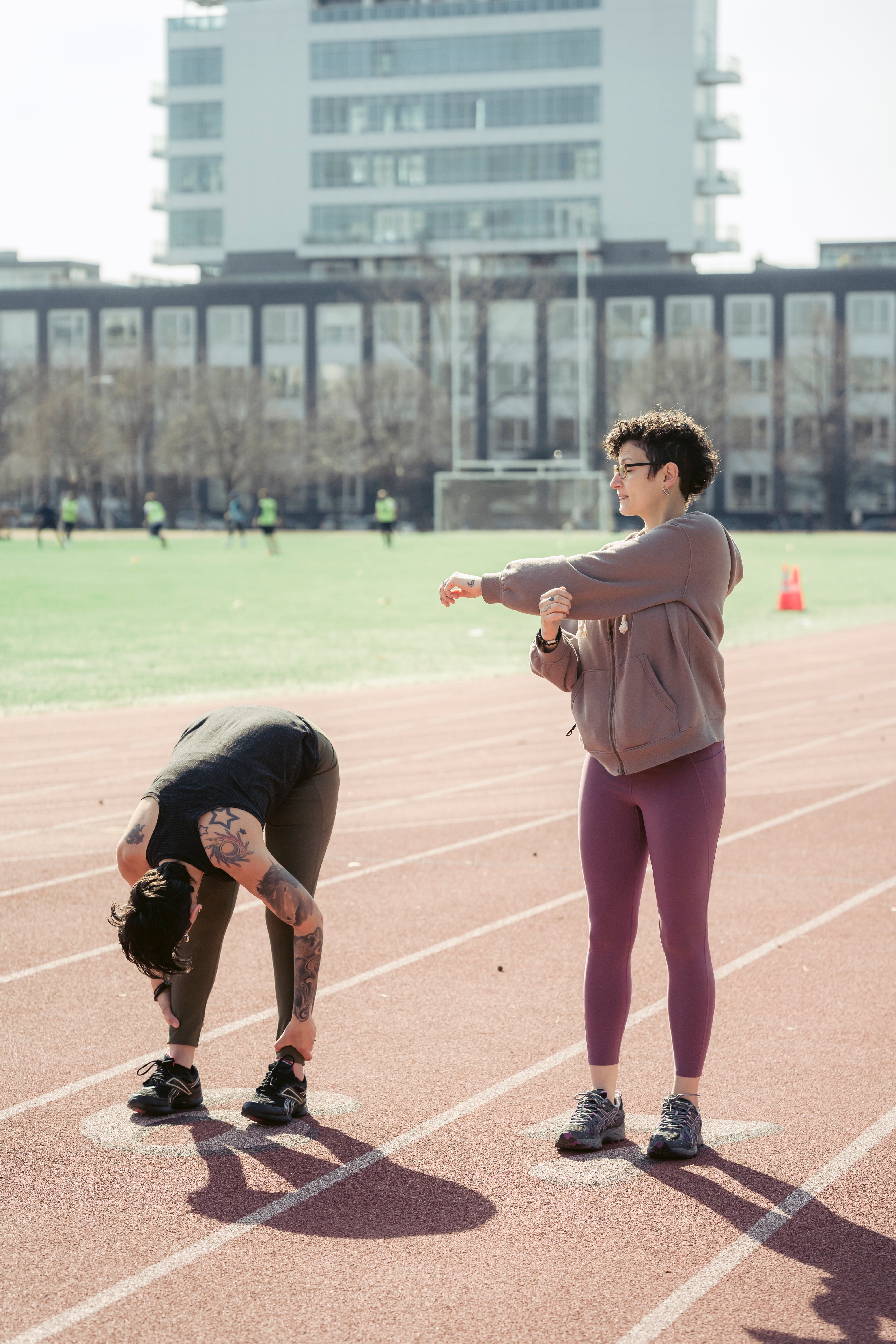Successfully completing a half marathon is a significant accomplishment, and it’s essential to give your body the rest it deserves. Embracing recovery after your event is not just about taking a break; it’s about allowing your muscles, joints, and cardiovascular system to heal and strengthen. During the first 48 to 72 hours post-race, focus on activities that promote recovery such as gentle stretching, foam rolling, and perhaps some light yoga. This is the time to avoid any high-impact workouts that can further stress your already taxed body.
Hydration and nutrition play a pivotal role in how quickly your body recovers. Be sure to replenish fluids and electrolytes lost during the race and provide your body with a balanced diet rich in proteins, carbohydrates, and healthy fats to aid in the repair process. Additionally, getting ample sleep is crucial; sleep is when the body’s most profound healing takes place. Aim for 7-9 hours of quality rest each night.
Remember, while it may be tempting to jump back into intense training, giving yourself a period of recovery will ultimately lead to better performance in the future. Listen to your body—if you’re feeling fatigued or sore, it’s a signal that you need more rest. It’s not just about physical recuperation; mental recovery is equally important. Take this time to reflect on your race experience, celebrate your achievements, and set new goals when you’re ready.
Visit our website to learn more and get started today! Click here.
Assessing Your Post-Race Condition and Needs
After the initial recovery phase, it’s time to assess your post-race condition. Pay attention to any lingering aches or pains that could indicate an injury. If necessary, consult with a healthcare professional to address any concerns. This evaluation isn’t solely about identifying injuries, but also about recognizing your body’s needs for rest and any specific areas that may require strengthening or flexibility work.
It’s also beneficial to review your half marathon performance to understand what training elements worked well and what could be improved. Did you hit your desired pace? How did your energy levels fare throughout the race? Reflecting on your nutrition strategy, hydration plan, and mental toughness during the race can provide valuable insights for future training adjustments.
Creating a list of these reflections will help you develop a personalized training plan that caters to your unique needs. Whether you need to focus on endurance building, speed work, or recovery techniques, understanding your post-race condition is the first step in setting effective and achievable training goals. By doing so, you’re laying the groundwork for not only a swift recovery but also a stronger return to your running regimen.
Incorporating Cross-Training into Your Recovery Plan

As you embark on the journey to regain strength post-half marathon, incorporating cross-training into your recovery plan is a strategic move. Cross-training activities, such as cycling, swimming, or yoga, can enhance your cardiovascular fitness while giving your running muscles a much-needed break. These activities can prevent overuse injuries by working different muscle groups and improving your overall muscle balance and flexibility.
For instance, swimming is an excellent low-impact exercise that can boost lung capacity and endurance without stressing your joints. Cycling, on the other hand, can build leg strength and stamina while also offering a refreshing change of scenery. Yoga and Pilates are particularly beneficial for runners as they focus on core strength, flexibility, and balance, all of which contribute to better running form and efficiency.
It’s important to start with light cross-training sessions and gradually increase the intensity as your body recovers. Listen to your body and adjust the cross-training activities based on how you feel. This methodical approach ensures that you maintain fitness while also allowing for proper healing and preparation for your next running challenge. By diversifying your workout routine through cross-training, you not only enhance your physical capabilities but also keep your motivation levels high by avoiding monotony in your training schedule.
Maintaining Running Momentum with Reduced Intensity

After the exhilaration of completing a half marathon, it’s crucial to maintain your running momentum, albeit at a reduced intensity to allow for recovery. During this phase, your focus should shift from high mileage to maintaining a base level of fitness. This can be achieved by integrating short, easy-paced runs into your weekly routine. These runs should be at a conversational pace, meaning you’re able to speak in full sentences without gasping for breath. This reduced intensity aids in muscle recovery while keeping the habit of running alive.
Another strategy is to incorporate ‘fun runs’ into your schedule. These are runs without a set distance or pace, where the primary goal is to enjoy the activity without any pressure. You can explore new routes, perhaps scenic trails that you haven’t tried before, to refresh your love for running and keep the experience enjoyable.
To stay motivated, setting small, achievable post-race goals can be very effective. Whether it’s improving your running form or simply enjoying the outdoors, having a target helps to direct your efforts. Additionally, you might consider joining a running group or participating in community runs to surround yourself with fellow enthusiasts. The camaraderie and shared experiences can be incredibly motivating and help you stay on track with your reduced-intensity running plan.
Setting New Goals and Crafting Your Training Plan
.jpg)
Setting new goals post-half marathon is a pivotal step towards continued improvement and renewed motivation. Begin by reflecting on your recent race experience. Analyze what went well and identify areas where you see room for growth. This introspection will serve as the foundation for your new objectives, whether it’s targeting a personal best, increasing distance to a full marathon, or even focusing on shorter, faster races to build speed.
Once your goals are defined, crafting your training plan is the next step. A balanced plan should cater to your new ambitions while considering the lessons learned from your past training cycle. It might involve adjusting your weekly mileage, incorporating different types of workouts such as intervals, tempo runs, or hill repeats, and allowing for adequate rest and recovery time.
It’s also essential to incorporate strength training and flexibility exercises to build a body that’s not only faster but also more resilient against injuries. Diversifying your training with activities such as swimming, cycling, or yoga can enhance your overall fitness and prevent burnout by keeping your routine fresh and engaging.
Remember, the key to a successful training plan is adaptability. Life’s commitments and your body’s responses will guide necessary adjustments along the way. Stay flexible, listen to your body, and adjust your plan as needed to ensure steady progress towards your new running goals.
Exploring Fun Runs and Community Events for Motivation

Visit our website to learn more and get started today! Click here.
After the discipline of half marathon training, exploring fun runs and community events can reignite your passion for running and provide a refreshing change of pace. These events often come with a less competitive, more celebratory atmosphere, which can be a great source of motivation and a way to connect with fellow runners.
Fun runs come in all shapes and sizes, from themed 5Ks filled with costumes and color throws to obstacle races that challenge your strength and agility. These events emphasize enjoyment over performance, making them a perfect setting to run with friends and family or to just enjoy the energy of the running community.
Additionally, joining a local running club or participating in community races can provide a sense of belonging and shared purpose. These groups often offer training sessions, social runs, and member-led events that can keep your training on track while adding a social component to your routine.
The camaraderie and collective enthusiasm found in these gatherings can be just what you need to maintain a high level of motivation. Plus, the regular interaction with like-minded individuals can lead to learning new running tips, discovering hidden trails, and forming training partnerships.
Whether you’re looking to have some fun, meet new people, or find additional support for your running journey, the local running scene is a treasure trove of opportunities. So lace up your shoes, pin on a bib, and embrace the joy of running in a whole new light.


